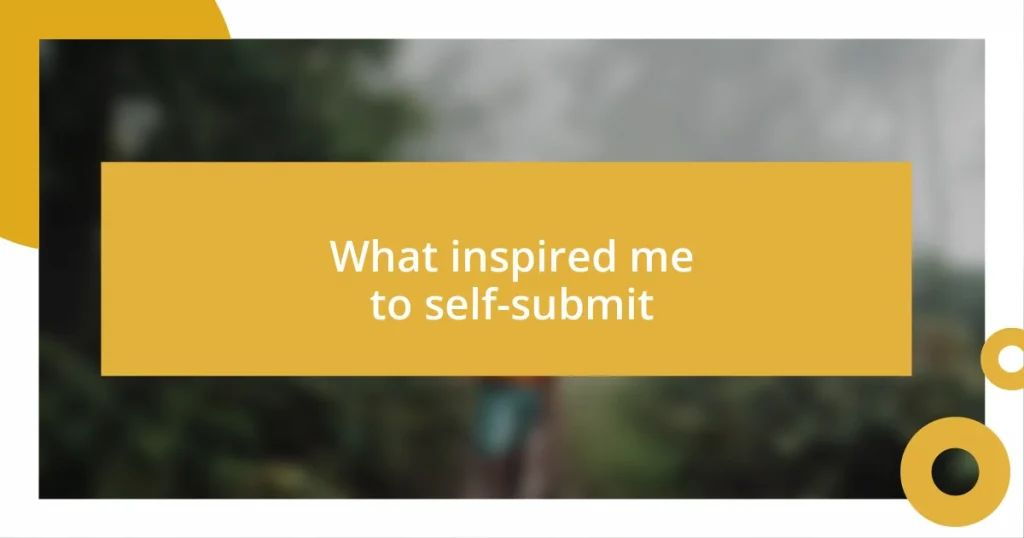Key takeaways:
- Research target agents thoroughly to ensure alignment with their genre preferences and interests.
- Craft a compelling pitch opening that involves a hook, emotional appeal, and clarity about your story’s premise.
- Practice delivery by refining tone, body language, and pacing, while being open to feedback to enhance effectiveness.

Identifying your target agents
When I first set out to find the right agents for my work, I remember feeling overwhelmed by the sheer number available. It’s essential to research agents who represent your genre to ensure you’re not sending your pitch into the void. Ask yourself: What do they enjoy reading? What styles do they promote? This kind of clarity can make all the difference.
I recall stumbling upon an agent who had recently represented a book that inspired me. Their approach to storytelling resonated with my own, making me realize how crucial it is to align your vision with the agents’ preferences. This connection fueled my motivation, and I felt much more confident in reaching out to them.
It’s also helpful to read articles, interviews, or even tweets from potential agents. You might find gems of information, like their favorite books or what they’re looking for in queries, which can spark ideas for personalizing your pitch. Isn’t it exciting to think about how a little bit of research can transform a standard email into a compelling conversation starter?

Crafting a compelling opening
When I began crafting my opening for pitch letters, I quickly realized that hooking the agent from the first line was paramount. I remember one evening, sitting at my desk, trying to put myself in the agent’s shoes. What would make me stop scrolling through my inbox? The answer was a powerful, unique statement that offered a glimpse into my story’s essence. I discovered that a compelling opening should be more than just an introduction; it needs to evoke curiosity and a desire to read more.
Here are some tips I found helpful when crafting my opening:
– Start with a hook: Use a striking statement or question that draws the reader in.
– Personal connection: Share a brief anecdote or insight about why you wrote the story.
– Clarify your premise: Clearly articulate the core idea of your work in one or two sentences.
– Emotional pull: Tap into the emotions of your narrative to resonate with the reader immediately.
– Set the tone: Reflect the mood of your writing from the very first moment.
By focusing on these elements, I saw my pitches transform from bland and forgettable to intriguing and memorable. It was a game changer, both in my confidence and in the responses I received.

Highlighting your unique selling points
When it comes to highlighting your unique selling points, it’s crucial to showcase what sets your work apart. I remember sitting down and making a list of my story’s most compelling attributes. For instance, I focused on my background and how it informs my writing. Being a history buff gave me a unique angle on crafting my world, infusing my narrative with rich details that not only entertained but resonated with readers. Sharing that in my pitch became a strong selling point, as it demonstrated authenticity and depth.
Additionally, I realized that emphasizing the diverse themes embedded in my work made a significant difference. One time, I wrote about my exploration of mental health through the lens of fantasy—a combination that wasn’t just fresh but also deeply personal. It wasn’t merely about selling a book; it was about presenting a conversation starter. I found that agents appreciate pitches where they can sense the passion behind the words, making it easier for them to connect with your vision.
Lastly, I learned to be candid about my influences and what inspired the story. Mentioning renowned authors I admired not only showcased my literary taste but also positioned my work within a broader context. For example, I detailed how I drew inspiration from a famous novel while crafting my protagonist’s journey. This kind of insight can give an agent a better understanding of what to expect and why your narrative matters in today’s market.
| Unique Selling Points | Examples |
|---|---|
| Authenticity | Using personal experiences to enrich storytelling, like a historical background. |
| Diverse Themes | Exploration of unique themes, such as mental health in a fantasy setting. |
| Literary Influences | Connecting your work to established authors can provide context and credibility. |

Structuring your pitch effectively
Structuring your pitch effectively requires an understanding of not only the content you want to convey but also the flow that will keep readers engaged. I remember when I first attempted to structure my pitch; I felt overwhelmed. My breakthrough came when I realized I needed to outline my pitch in a clear, chronological manner—starting with the hook, moving into the unique selling points, and ending with a strong closing statement that reinforced my excitement about the project.
To keep it concise, I made sure each section only contained the most essential information. For instance, I learned early on the importance of transitioning smoothly between points, using phrases that guide the reader from one thought to the next. This not only helped maintain clarity but also created a rhythm that felt almost conversational. Have you ever read something that felt disjointed? That’s the last thing I wanted my pitch to feel like!
Finally, I incorporated a personal touch by inviting the reader to share my enthusiasm. I often posed rhetorical questions, such as, “Wouldn’t you want to dive into a story that challenges perceptions about love and loss?” This approach allowed me to share my emotional investment while simultaneously encouraging agents to envision the impact my story could have. The result? A pitch that resonated, intrigued, and ultimately opened doors to exciting conversations.

Practicing and refining your delivery
Practicing your delivery is where the magic truly happens. I recall rehearsing my pitch in front of a mirror, tweaking my tone and body language until everything felt just right. Have you ever noticed how the way you say something can change its meaning completely? I found that gesturing naturally while I spoke made my pitch more engaging, drawing people into my narrative.
Recording myself was a game-changer; it showed me the nuances I couldn’t catch in the moment. Listening to the playback, I discovered that my excitement often translated into a rushed delivery. Instead, I learned to savor the key moments, letting each word breathe, which created a more compelling rhythm. I can’t stress enough how this simple act of observation can elevate your confidence and clarity.
The feedback I gathered from friends was invaluable. They would highlight parts of my pitch that sparked their interest and areas where I seemed too mechanical. One friend even suggested that I try varying my pacing to build suspense—an insightful tip that transformed my delivery. It’s fascinating how external input can reshape your approach, right? Adaptability is crucial; what works for one audience may not work for another, and being receptive to these adjustments helped refine my pitch into something truly captivating.















